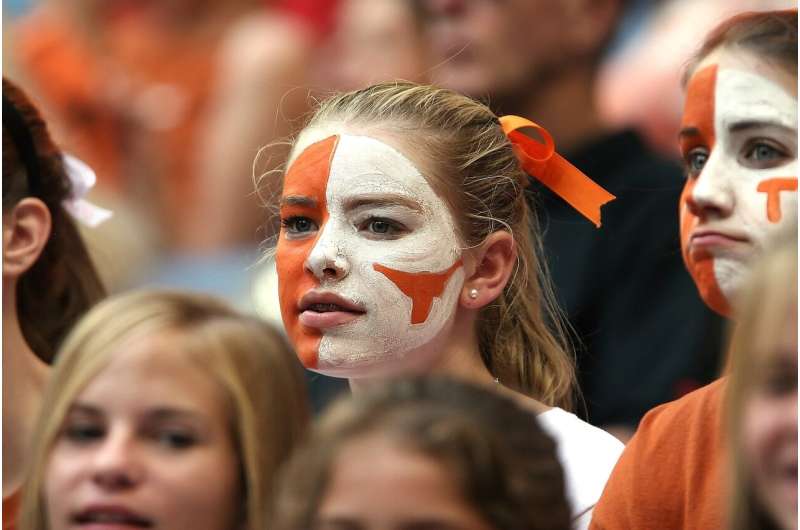Credit: CC0 Public Domain
Like everything else in 2020, Thanksgiving will be different this year. But there will still be football on TV, and if you catch any of the games, your brain will be processing them in ways you're probably unaware of. In a study published November 25 in the journal Neuron, researchers show how the feelings of surprise experienced while watching sports creates shifts in brain patterns. These shifts are important for neuroscientists to understand because they contribute to the formation of memories that are particularly strong.
"As we go about the world, we tend to segment events into separate chunks," says lead author James Antony, a researcher at the Princeton Neuroscience Institute. "We later remember these chunks as discrete events. So the question arises, 'How does our brain decide when one segment ends and another one starts?' It turns out, this happens when something occurs that's unexpected."
To study surprise in a naturalistic setting, the researchers observed people while they were watching sports. They chose basketball because frequent scoring in the average game provided more opportunities to observe how the brain responded to changes. Twenty self-identified basketball fans watched the last five minutes of nine games from the 2012 men's NCAA March Madness tournament. Older games were chosen because the participants, who were mostly undergraduates, were unlikely to have already seen or remember them.
To measure surprise, the researchers first calculated the probability of each team winning for every possession in the games, and surprise was calculated as the change in that probability across possessions. As a result, games that were close and had a lot of back and forth in scoring had more surprises than games that were blowouts.
While the participants were watching the games, they were undergoing eye tracking and functional MRI scans to measure neural activity. The researchers saw greater changes in activity patterns in the prefrontal cortex and pupil dilations at more surprising moments. Intriguingly, the effects of surprise on these activity patterns differed depending on whether these moments contradicted or bolstered current beliefs about which team was more likely to win.
"Neuroimaging is usually done in a very controlled environment, but we wanted to do something that was more naturalistic," Antony says. "At the same time, there's a trend to leverage big data by having lots of precise measurements. That's what we were able to do with our win probability metric."
The researchers also tracked activation in regions rich in dopamine, which carries information about rewards. In line with these rewarding effects, they found that there was greater activity in these regions when the subjects' own preferred teams scored.
The researchers are now reanalyzing the data collected in the study to see if they can line up the win probability metric with neural measures of engagement. They also plan to survey sports fans about their best and worst sports memories from their real lives, to see if they can relate those memories to their levels of surprise.
"Watching sports is a great paradigm for perception and prediction of events because these predictions are quantifiable," Antony says. "Also, although sports are not relevant for survival, they tap into deep human nature in terms of excitement and social bonding."
More information: Neuron, Antony et al.: "Behavioral, physiological, and neural signatures of surprise during naturalistic sports viewing" , DOI: 10.1016/j.neuron.2020.10.029 , www.cell.com/neuron/fulltext/S0896-6273(20)30853-9
Journal information: Neuron
Provided by Cell Press
























